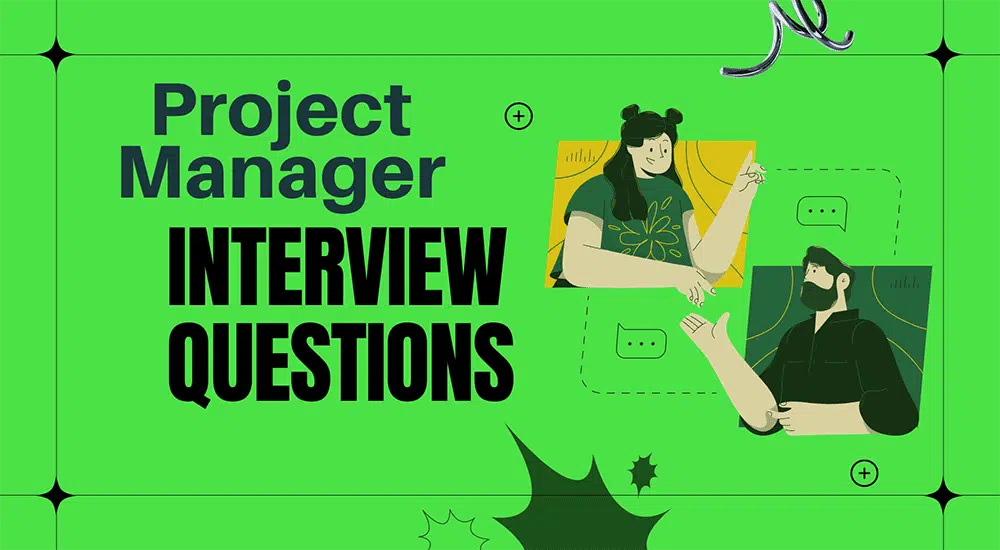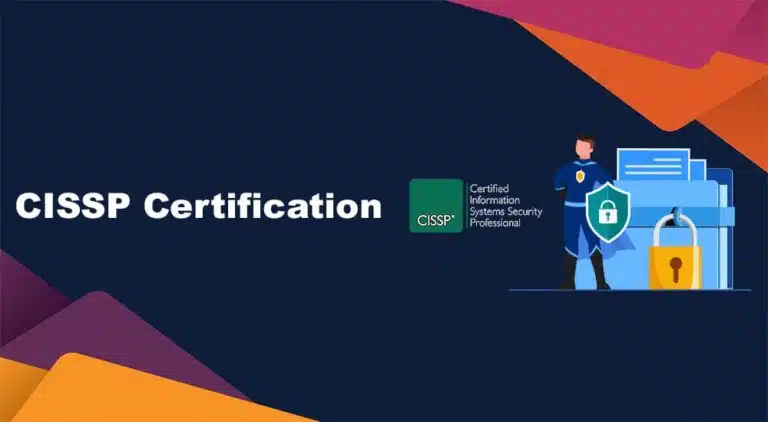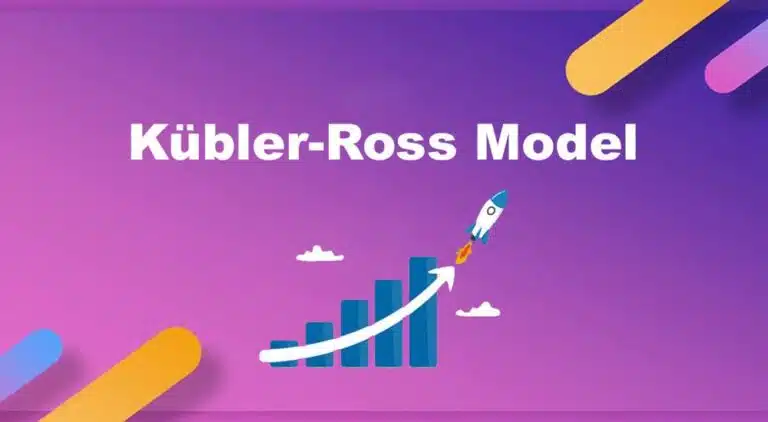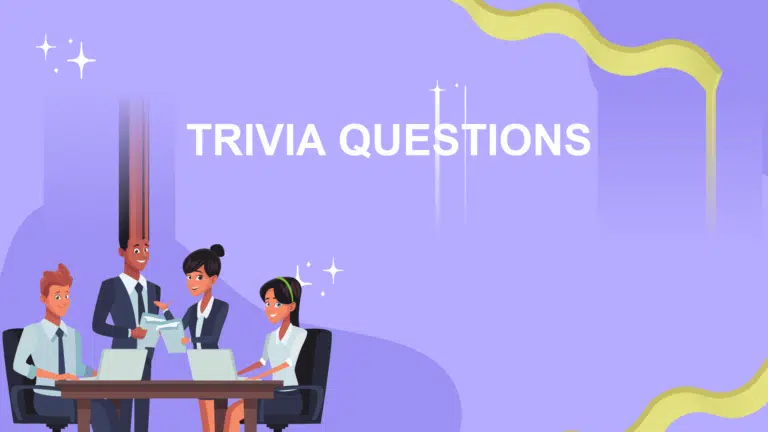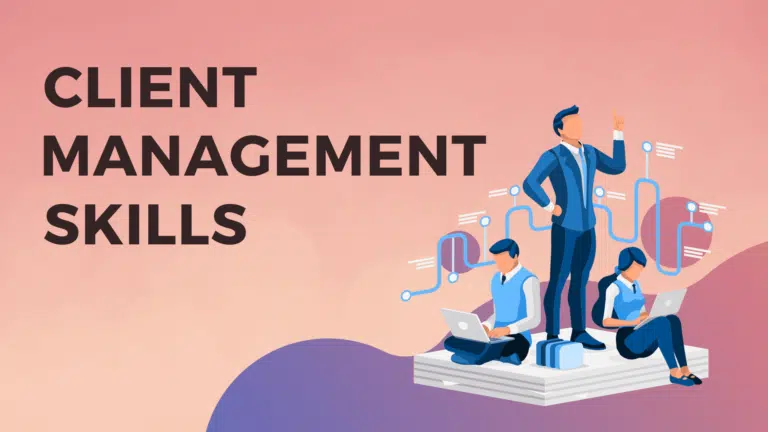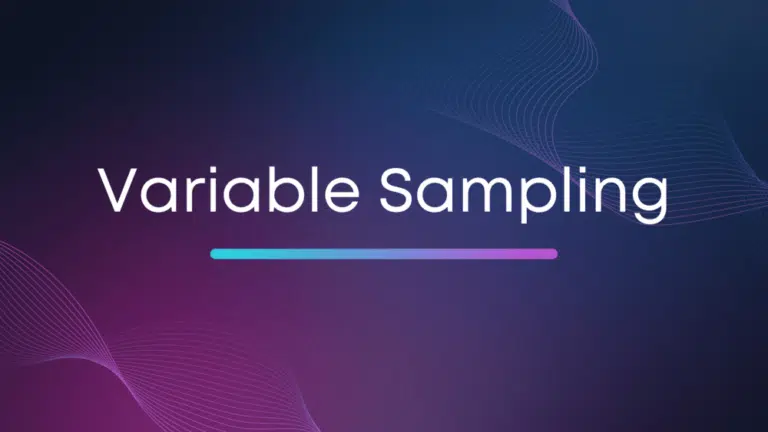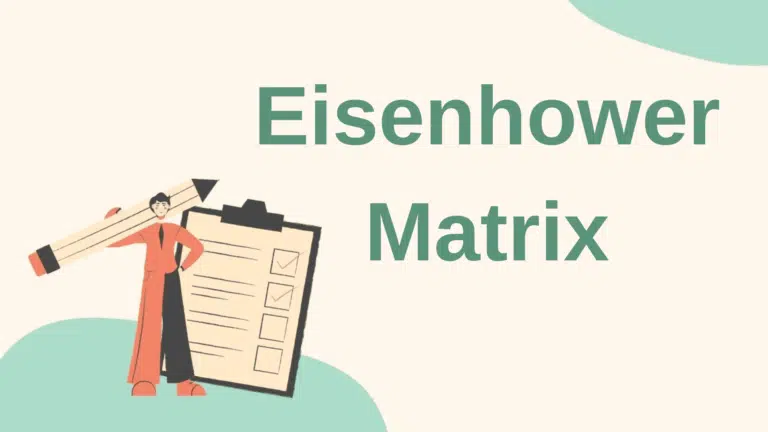Project manager interview questions aim to test the ability of project managers to handle complex projects in challenging situations with their interpersonal, technical, communication, and leadership skills.
These questions have a well-defined structure and revolve around work experience and other project management skills.
Many new project managers worry about interview questions. However, answering questions is easy with little practice and confidence.
Questions can be direct or indirect; before answering a question, take a moment to understand and answer accordingly. The key to an interview is providing impressive, correct, and appropriate answers.
Regardless of the type of interview, questions are likely to begin simple, and based on the answers; follow-up questions will proceed.
29 Project Manager Interview Questions & Answers
#1. Tell Us About Yourself.
You are supposed to explain yourself. The interviewer starts with small talk and leads into specific questions.
You can answer the questions in several ways. The first is the Current, Previous, and Future (CPF) method. Begin by describing your previous role and accomplishments. Next, describe the events and stages leading to the present stage. Last, the CPF technique is to explain your plans and how you would be helpful to the interviewing firm.
Regardless of the CPF order, you must relate it to your reason for desiring a project manager position with the organization.
#2. How Do You Define an Ideal Project?
An ideal project includes all ideal conditions. It has the following characteristics:
- Provides relevance and value to its end-users
- Has a reasonable scheduled time frame
- Provides a sufficient budget
- All assumptions & constraints are true
- Execute as planned
- No deviation from any baseline lines
- Stakeholders are satisfied
- Obeys ethical principles
- Has the liberty to make changes as required
- Etc.
#3. How Do You Identify Stakeholders, and Why Is It Required?
Project stakeholders have an interest in the project. Their actions influence or are influenced by the project. The stakeholders’ satisfaction determines the project’s success. Therefore, it is necessary to identify them at the beginning of the project and keep them engaged throughout the project lifecycle.
A good project manager must ensure effective communication and collaboration with stakeholders and use their feedback to ensure the project’s outcome aligns with its values.
Therefore, it is critical to identify the stakeholders early on in the project. Stakeholders can be internal or external.
Internal stakeholders include
- Project team
- Project manager
- Product owner
- Etc.
External stakeholders include
- Customers
- Product end users
- Distributors
- Investors
- Advisors
- Sponsors
- Governing bodies
- Business community
- Etc.
You can use the following methods to identify stakeholders:
- Review documentation
- Brainstorming sessions
- Questionnaire & Checklist
- Meeting & interview
#4. What is the Use of Stakeholder Analysis and the Power-Interest Grid?
Stakeholder analysis helps map stakeholders and helps with the following:
- Understand the expectations and requirements of stakeholders
- Prioritize the stakeholders
- Manage stakeholders
On a power interest grid, stakeholders can be grouped as follows:
- High capacity – High enthusiasm
- High capacity – Low enthusiasm
- Low capacity – High enthusiasm
- Low capacity – Low enthusiasm
The above grouping helps in:
- Analyze stakeholders
- Determining the level of involvement of stakeholders
- Developing a stakeholder engagement plan
#5. What Project Documents Are Required During Project Initiation?
The Project Initiation Document (PID) is the key project document in the initiating phase. It provides the basis for the project and contains necessary information that serves as a reference point for clients and the project team during the execution of the project.
An alternative to the PID is the Project Character Document (PCD), which is less detailed.
A PID can contain the following:
- Project background
- Business case
- Project objectives
- Project scope statement
- Critical stakeholders
- Project dependencies
- High-level assumptions & constraints, and risks
- Communication and reporting plan
- Measures for project organization, control, and governance
- Quality control plan
- PID approval and sign-off
- Comprehensive business summary
#6. How Do You Collect Project Requirements?
You can use different techniques to collect project requirements. A few of them are given below:
Active Deliberation: This is a brainstorming technique to collect ideas from different groups of people and is useful when requirements are needed for any problem. Active deliberation provides clarity on the available details.
Data Analysis: In data analysis, available data is reviewed in search of the required information.
Interview: In an interview, you approach key stakeholders to collect their feedback.
The Questionnaire Approach: Stakeholder and client interviews provide critical project information and requirements. A common and effective way of interviewing stakeholders and clients is through questionnaires that help get quick answers.
Focus Group Discussion: Here, representatives of different groups are invited to provide feedback.
Analyzing User Interface: A user interface can be a human or a bot for a software product. This technique ensures users get a simple, uncluttered, friendly, and useful interface.
User Observation: Here, product use is monitored by observation or asking questions to pinpoint improvement requirements and identify the process flow.
Modeling of Prototypes: Here, users are given a sample product, and you update it until the users are satisfied.
#7. What is a WBS, and How Does it Help in Planning?
WBS stands for Work Breakdown Structure. It breaks the project work into manageable parts called “work packages.”
The WBS helps in the planning in the following ways:
- It helps visualize the project scope
- Defines the “expected work” to be done
- Highlights of project milestones and iterations
- It helps avoid scope creeps and gold plating
- Often used to designate responsibilities to teams, and their members
- Helps in estimating the project budget
- For assigning resources
- Encourages collaborative effort
- Ensures all deliverables are achieved
#8. Does the RACI Matrix Help in Resource Management?
The RACI matrix stands for Responsible, Accountable, Consulted, and Informed. It is also referred to as a RACI chart, diagram, or table. It is a powerful project management tool and a type of Responsibility Assignment Matrix (RAM).
It helps in assigning roles and responsibilities to team members. Stakeholders will know the person responsible for tasks.
The benefits of the RACI matrix are as follows:
- Stakeholders can see the responsible and accountable person for the task.
- Help interdependencies between different roles of team members
- Enhance communication
- Minimizes work overload
#9. What is Your Leadership Style?
The leadership style depends on the stage of the team’s formation. If the team is in the storming stage, the project manager can be autocratic and use the directing style of leadership, but when the team is performing, they can show a laissez-faire style.
#10. What Are the Project Risks, and How Do You Manage Them?
A risk is an uncertain event that, if it occurs, can affect the project objectives. To manage the project risk, first, you need to identify risks. After risk identification, you can analyze the risks, prioritize them, develop a risk response plan, and manage them.
The response plan is developed for high- to medium-level risks. Lower-level risks will be recorded in a watchlist for further monitoring.
If unidentified risks occur, you will manage them through a workaround.
#11. What are the Key Procurement Documents?
The following are the main procurement documents used in project management:
- RFI (Request for Information)
- RFP (Request for Proposal)
- RFQ (Request for Quotation)
- PO (Purchase Order)
# 12. What Types of Procurement Contracts Are Used in Project Management?
The following contracts are commonly used in project management:
#13. What Motivation Theories are Helpful in Motivating Team Members?
You can use the following motivational theories to motivate team members:
- Incentive Motivational Theory: This theory uses bonuses, praises, promotions, stipends, salaries, or recreational and educational leave opportunities to motivate team members toward work.
- Needs Theory of McClelland: This theory identifies the needs of employees and tries to solve them to motivate them. Examples of these needs include the need for affiliation, power, and achievement.
- Competence Theory: This theory is based on the concept that people participate in certain activities to display their capabilities and skills; allowing employees to display their abilities makes them feel competent and keeps them motivated.
#14. Which Conflict Management Technique is the Best to Manage Conflicts?
No conflict management technique is the best; a selected technique depends on the situation, issue, and stakeholders involved.
However, PMI recommends using a collaborative technique that builds consensus and motivates employees.
#15. How Will You Deal with an Underperforming Employee?
Meet the employee to find the cause of the poor performance. The employee might have been assigned the wrong task, which is not relevant to his skills or knowledge. If this is the case, assign the right task to the employee so he can perform well.
If the employee lacks skills, the project manager can arrange training for him and motivate him to perform better.
Monitor the employee for some time to see if he is performing well.
#16. How Can You Prevent Gold Plating?
Gold plating happens when a team member considers a new feature relevant enough to be included in a project without proper approval and believes it will make the client happy.
To stop gold plating, the project manager can strengthen formal communication and discourage informal communication. Ensure roles and responsibilities are well defined to avoid conflict and allow them to communicate freely to mitigate the effect of miscommunication.
For every change, follow the integrated change management process.
#17. How Will You Deal with Change Requests?
The change request must be made through formal written communication. The project manager will review the requests, assess their impact on the project objectives, and inform the project sponsor about their impact on the project budget, schedule, scope, etc.
The project manager will formally process and approve the request if the client agrees to proceed. After the approval, they will update the project plan to accommodate the new change.
#18. What are the Status Reports, Progress Reports, and Performance Reports?
Status reports show the project’s current status, such as the actual cost spent, completed work, and planned completed work.
Progress reports show how the project is progressing; they include cost variance, schedule variance, cost performance index, schedule performance index, etc.
Performance reports include status reports, progress reports, and forecasting analyses such as estimate to complete, estimate at completion, TCPI, variance at completion, etc.
#19. How Will You Implement Earned Value Management (EVM) in Your Project?
You can use the following process to implement EVM in the project:
- Create a Work Breakdown Structure (WBS)
- Develop a Schedule Baseline
- Apply Earn Value Parameters on the Baseline
- Keep track of earned and actual revenue
- Collect the data and process it in the earned value analysis.
By analyzing the EVM, a project manager can estimate the amount of work performed, the value of work completed, and the progress in terms of cost and schedule.
#20. What Activities Are Performed While Closing the Project?
During the close-out project process, the following activities are carried out:
- Validate the deliverable
- Get a formal product acceptance from the sponsor
- Perform a retrospective review of iterations
- Obtain customer feedback
- Finalize lessons learned collection
- Perform feedback analysis
- Carry out a market survey
- Get the project sponsor and project manager to sign the project closure officially.
#21. What Are the Qualities of an Effective Project Manager?
An effective project manager should possess the following qualities:
- Communication skills
- Leadership qualities
- Problem solver
- Empathetic
- Technical competence
- Good decision-making
- Proper time management
- Integrity
- Schedule management
- Enthusiasm
- Be a Visionary
- Negotiation skills
#22. How Does the Project Manager Spend Their Time Each Day?
The project managers spend their daily time on the following activities:
- Reviewing the previous day’s progress
- Organizing activities for the current day
- Directing activities execution
- Reviewing and evaluating completed tasks
- Monitoring work in progress
- Detecting areas requiring attention
- Troubleshooting
- Communicating among stakeholders.
#23. How Do You Know if the Project is Not Progressing as Planned?
Project progress is measured against the project baselines, which are the scope baseline, cost baseline, and schedule baseline. The project manager can collect the status and measure the progress against these baselines weekly or monthly.
A review of planned and current progress will show the project manager if the project is on track or has deviated from the planned progress.
#24. Do You Have Budget Management Experience?
The project budget is known as the budget at completion. The interviewer can ask this question to know if you can estimate the project’s cost and manage it throughout the project.
Budget management includes estimating a project’s costs, determining budgets, monitoring and controlling budget expenses, etc.
#25. Do You have Experience in Managing Remote Teams?
These days, businesses are shifting online due to globalization, affordability, and ease of use. This new work culture is more common in the software field. Hiring managers can ask this question if you are in the IT industry.
If your answer is yes, they can further ask what project management software or task management software you have used or what the benefits and cons of this arrangement are.
#26. Tell Us About Your Last Project.
The interviewer can ask these questions to see if your current experience aligns with their requirements, your role, and how you performed.
You can provide them with the project details and how you brought it to an end. What were the challenges, and how did you overcome them?
#27. What was the Most Challenging Project You have Handled, and How Did You Overcome the Challenge?
Through this question, the interviewer wants to see you as a project manager who can manage the project under tough conditions.
Explain to them the toughest project you handled. What was the challenge, and how did you successfully resolve issues and complete the project?
This is an opportunity for you to show the interviewer your interpersonal and communication abilities.
#28. What is Your Biggest Mistake in any Project?
This question helps the interviewer determine your honesty. Everyone makes mistakes, and if you say you never made mistakes, you will be in trouble.
Be truthful in your answer and explain your mistake and how you corrected it.
#29. What is Your Experience Using Project Management Software, and What Software Do You Prefer?
If the hiring firm is large and uses software tools to manage their processes, they want to see if you are experienced with project management software.
You can explain your experience and tell them your preference with pros and cons.
Tips for Handling Project Manager Interview Questions
Keep these tips in mind when answering project manager interview questions.
- The first impression is the last; ensure your first impression is impressive.
- The response should be streamlined for the project manager’s role.
- Be professional
- Answer the question according to the interviewer’s preference: if he is a technical person, provide technical details; otherwise, keep it non-technical and easy to understand.
- Show passion, enthusiasm, and commitment
- Be direct; avoid blabbing and going around irrelevant topics
- Avoid giving memorized answers; practice and provide personalized responses.
Summary
Through project manager interview questions, the interviewer checks the capabilities and qualities of a prospective project manager. Answering these questions won’t be difficult if you have handled projects and are confident about handling challenging projects.

I am Mohammad Fahad Usmani, B.E. PMP, PMI-RMP. I have been blogging on project management topics since 2011. To date, thousands of professionals have passed the PMP exam using my resources.

